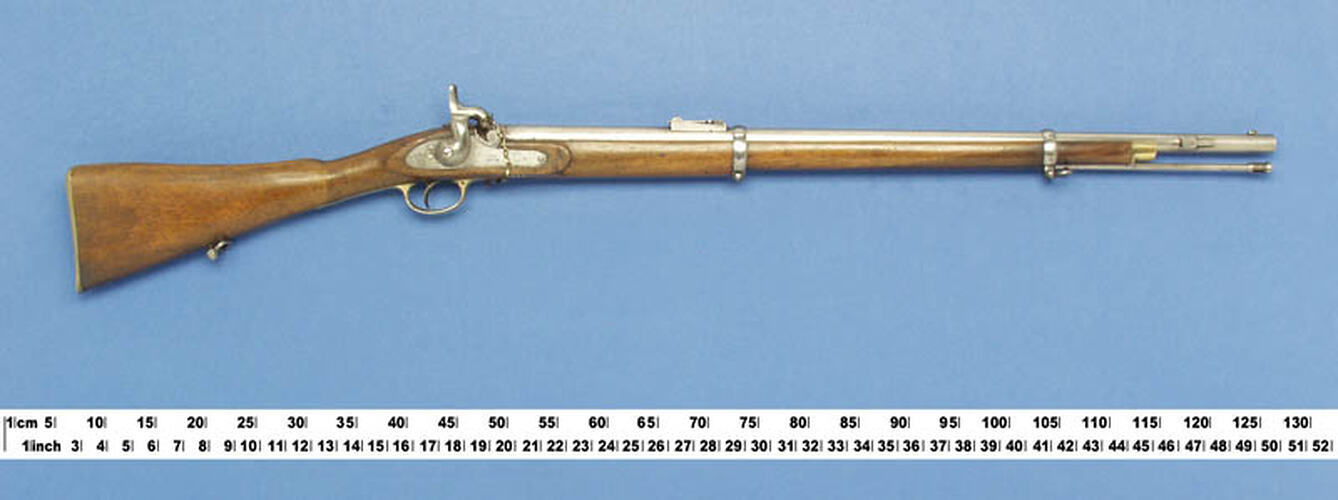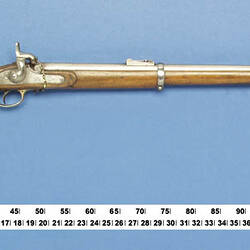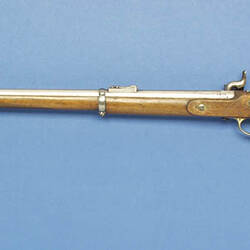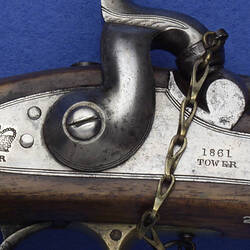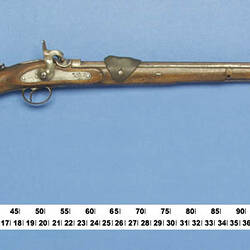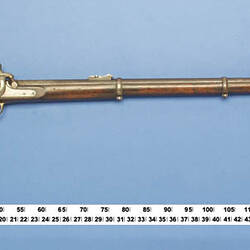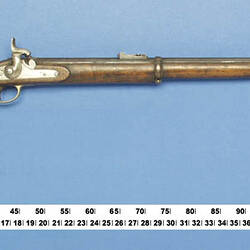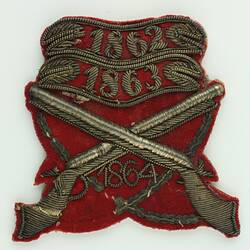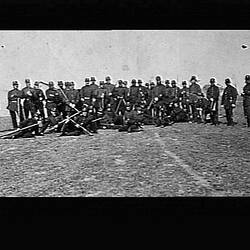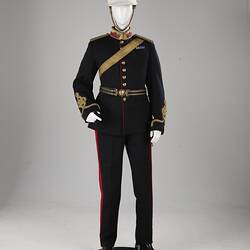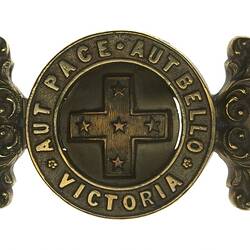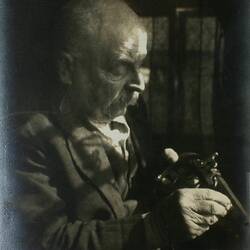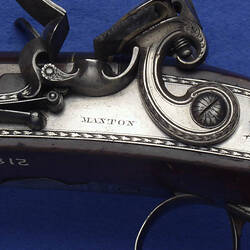Summary
British Service percussion rifle, Lancaster carbine (Ordnance Model), cal. .577 in., steel rifled round barrel, 80.30cm long, bayonet mount on right hand side.
Made by John Edward Barnett & Sons, London, 1861.
Buttplate tang stamped 'G-62/ 107/ V.V' denoting use by the Victorian Volunteer forces.
Physical Description
Steel lock and hammer on R.H. side, brass oval triggerguard with small front spur, no sideplate, brass butt plate, two sling swivels. Barleycorn foresight that has been largely removed, graduated rear sight, barrel fastened to stock via two steel barrel bands, Nipple protector fastened to front of triggerguard via brass chain.
Significance
The Lancaster carbine was introduced into British service in 1855. Externally it appeared almost identical to the Pattern 1856 Short Rifle, more commonly known as the Sergeant's Model, however rather than the Short Rifle's three groove Enfield rifling, it employed the Lancaster rifling - an oval bore that varied between .016" and .018 along its two axes. Unlike the later Lancaster carbine with a reduced calibre of .568 (26 bore) - as opposed to the Ordnance Model's .577 (25 bore) - and steel furniture, the Ordnance model was finished with brass fittings, and was popular in Victoria for competitive shooting until superseded by the appearance of the reduced bore variant. Interestingly, this item has a nipple protector fitted - a feature not typical to the Ordnance Model, but standard on the reduced bore model.
More Information
-
Collection Names
-
Collecting Areas
-
Acquisition Information
Donation from Mr William E. Cole, 23 Sep 1943
-
Manufacturer
John Edward Barnett (Gunsmiths), London, England, Great Britain, 1861
-
User
Victorian Volunteer Forces, 1854-1884, Victoria, Australia, 1861-1884
-
Collector
Mr William E. Cole, Melbourne, Greater Melbourne, Victoria, Australia
-
Inscriptions
Stamped on barrel top: LANCASTER PATENT Stamped on barrel top: Tower examination marks (crown over numeral) Stamped on barrel underside: BARNETT Stamped on barrel underside: DEAKIN Stamped on barrel underside: 299; crown over I.J.; 15 I.J; G.F; I.J Stamped on barrel plug underside: 15 Stamped on butt tang: G-62/ 107/ V.V Stamped on lockplate: crown over VR; 1861/ TOWER [year of manufacture] Stamped on lockplate back: BARNETT; I.J; J. BRAZIER; 'B' over 50 Stamped on ramrod: G 107; T & C /GILBERT; B44(? - second numeral partially illegible) Stamped on stock L.H.side: J.JONES Stamped on stock underside: BARNETT Stamped on stock R.H.side in circular frame: TOWER-LONDON/ 1861, crown over broad arrow with flanking initials 'W' and 'O' Stamped on stock R.H.side: 1 Stamped on L.H.side of rear sight: W & S
-
Model Name or Number
-
Brand Names
-
Classification
-
Category
-
Discipline
-
Type of item
-
Overall Dimensions
121.5 cm (Length), 5.9 cm (Width), 20.6 cm (Height)
Barrel length: 80.30cm
-
Keywords
Rifles & Muskets: British, Rifles & Muskets: Military, Victorian Colonial Defence Forces, Victorian Volunteer Forces
